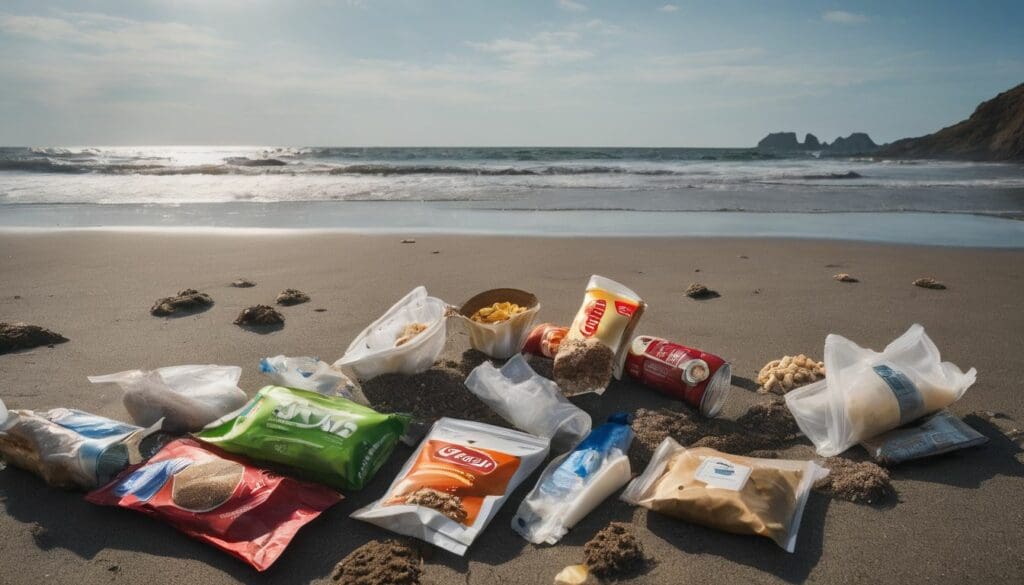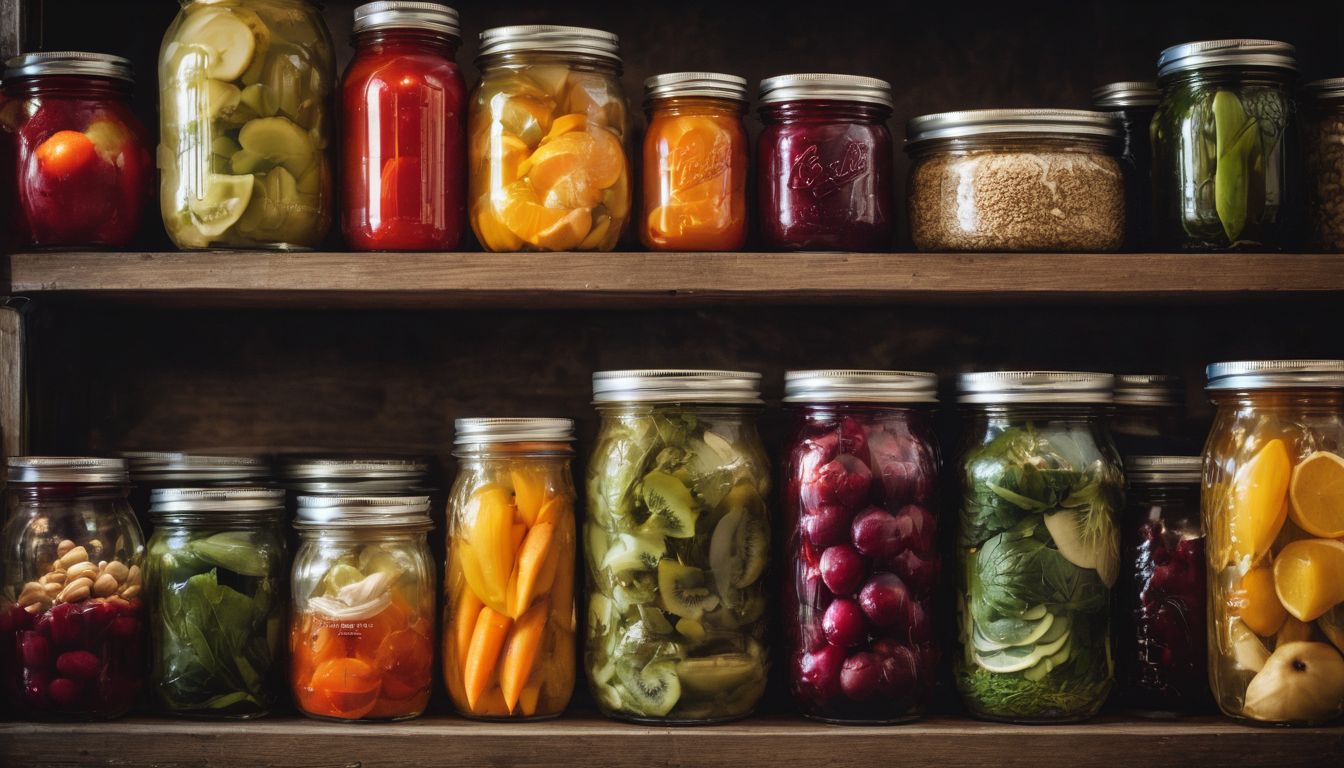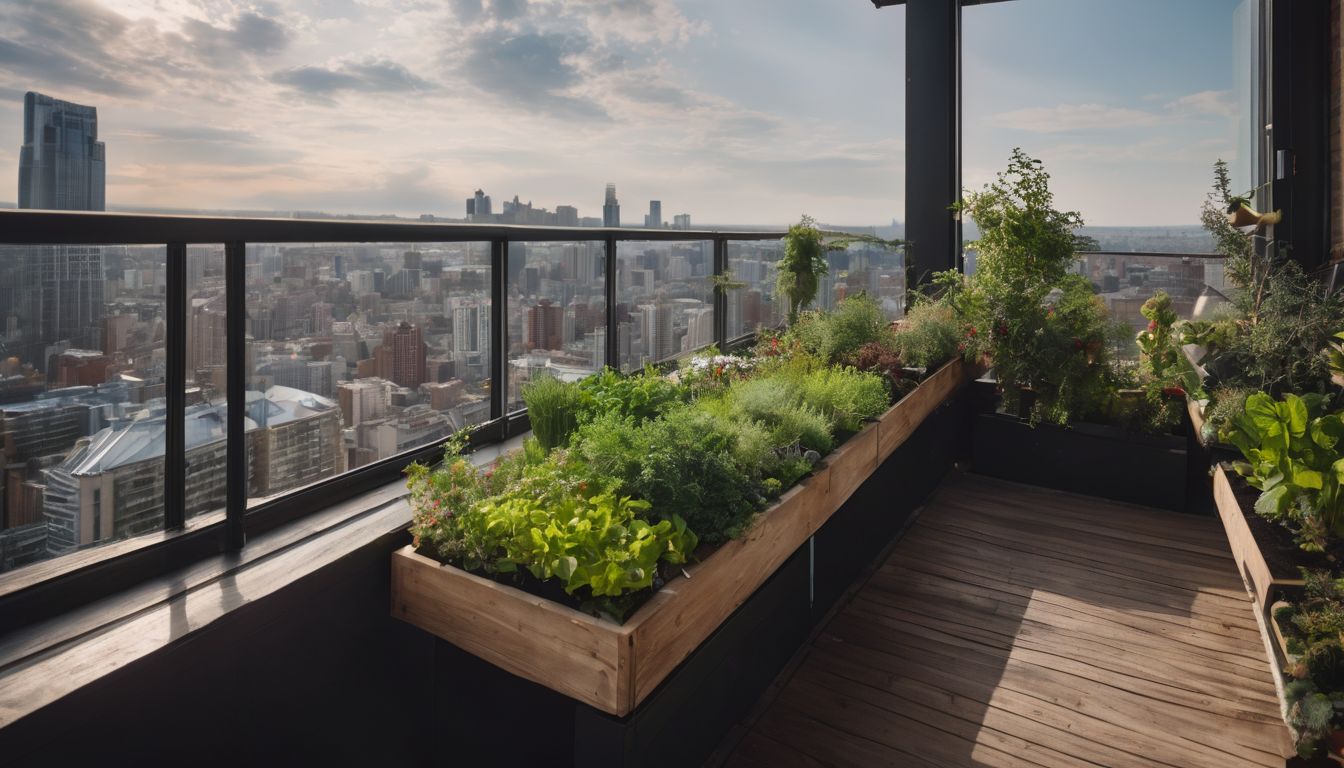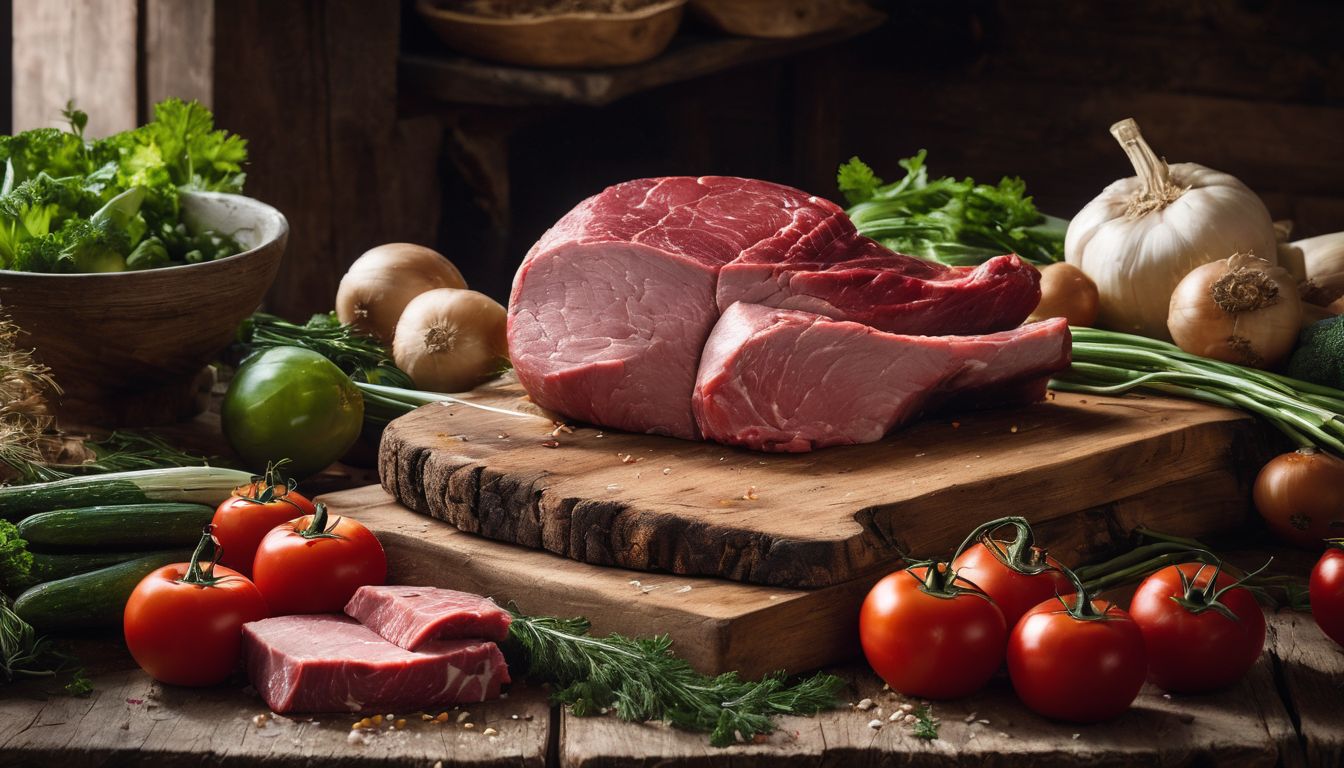Every day, we throw away tonnes of food packaging, often without considering its toll on the planet. In a single year, millions of plastic food containers and wrappers end up clogging our oceans and landfills.
This blog will guide you through the consequences of these choices and offer practical solutions for a greener future. Let’s make a change together—read on to find out how.
Key Takeaways
- Every year, vast amounts of plastic and other non – biodegradable packaging materials end up polluting our oceans and landfills, taking hundreds of years to break down.
- Harmful chemicals like BPA found in some food packaging can leach into food and harm human health as well as contaminate soil and water, affecting wildlife.
- Biodegradable options such as PLA or mushroom packaging are growing in popularity as sustainable alternatives to traditional food packaging materials.
- Government legislation is increasingly targeting a reduction in single-use plastics, encouraging the development and use of environmentally friendly packaging solutions.
- Individual actions like choosing products with less packaging, recycling correctly, composting organic waste, and advocating for sustainable practices can significantly reduce environmental damage.
The Environmental Impact of Food Packaging
The environmental impact of food packaging is significant, with the use of non-biodegradable materials and harmful chemicals contributing to pollution of land, water, and air. This has negative effects on wildlife and ecosystems.
Types of food packaging
Food packaging materials come in various forms and serve multiple purposes. They protect food during transport, extend the shelf life, and provide important information to consumers.
- Plastic Containers and Wrappers: Commonly used for their durability and lightweight nature. Items like bottles, trays, and cling films fall in this category, but they contribute significantly to plastic pollution.
- Glass Jars and Bottles: Often chosen for their non-reactive properties which help in keeping food fresh. While glass is recyclable, its heavier weight increases transportation emissions.
- Metal Cans: Ideal for long-term preservation of food. Metals such as aluminium and steel are widely recycled but mining for these resources has a high environmental cost.
- Cardboard Boxes: A popular choice for dry foods due to their biodegradability. However, the production process can consume a lot of energy and water.
- Paper Bags and Wraps: Generally used for carrying or wrapping items like sandwiches. Paper is biodegradable but usually requires virgin fibre from trees, which leads to deforestation.
- Biodegradable Packaging: Made from plant-based materials that can decompose naturally. This ecofriendly option helps reduce waste but may not always offer the same shelf life as traditional plastics.
- Edible Packaging: An innovative approach where the packaging can be consumed with the product, leaving no waste behind. It’s still an emerging technology and not widely available for all types of food.
Use of non-biodegradable materials
Non-biodegradable materials, such as plastic and Styrofoam, are commonly used in food packaging. These materials can take hundreds of years to decompose, contributing to environmental pollution and harming wildlife.
When these non-biodegradable materials end up in landfills or oceans, they release harmful chemicals and microplastics into the environment, posing a serious threat to ecosystems and human health.
Food packaging made from non-biodegradable materials also contributes significantly to the problem of packaging waste.
Moreover, chemicals present in non-biodegradable food packaging pose potential health risks when they come into contact with food products. The extraction and production of these materials further deplete natural resources and result in significant life cycle emissions that contribute to climate change.
Harmful chemicals in packaging
Harmful chemicals can leach from food packaging into the contents, posing health risks to consumers. Substances such as phthalates and bisphenol A (BPA) are commonly found in plastic packaging and have been linked to hormone disruption and other health issues.
Additionally, perfluorinated compounds used in grease-resistant coatings on food packaging have been associated with adverse developmental effects.
These harmful chemicals highlight the need for greater awareness of the potential dangers posed by certain types of food packaging materials, encouraging individuals to seek out alternatives that prioritise both environmental and human health.
The Negative Impacts of Packaging on the Environment
Food packaging has a significant negative impact on the environment, contributing to land, water, and air pollution. It also poses a threat to wildlife and marine life due to improper disposal and littering.
Pollution of land, water, and air
Food packaging contributes to the pollution of land, water, and air due to the improper disposal of plastic containers, wrappers, and other packaging materials. These items make their way into landfills or are littered in natural environments where they can take hundreds of years to decompose.
Consequently, this leads to contamination of soils and water bodies with harmful chemicals from the breakdown of non-biodegradable packaging materials.
Moreover, burning plastic packaging releases toxic substances into the air leading to air pollution that poses serious health risks to humans and wildlife. Therefore, it is crucial for consumers and businesses alike to prioritise sustainable food packaging solutions that minimise these environmental impacts.
Harm to wildlife
Food packaging can pose a significant threat to wildlife. Plastic packaging, in particular, can be mistaken for food and ingested by animals, causing internal injuries, digestive blockages, and death.
Animals also get entangled in plastic rings and bags or suffocate from plastic debris. Chemicals used in packaging materials can contaminate the environment, affecting wildlife habitats and ecosystems.
The production of non-biodegradable packaging contributes to habitat destruction and pollution that harm wildlife populations globally. As environmentally conscious individuals supporting conservation efforts, we must advocate for sustainable packaging solutions that minimise harm to wildlife and their natural habitats.
Promising Developments in Sustainable Food Packaging
In recent years, there have been promising developments in the use of biodegradable packaging materials and a push for plastic ban legislation. There are also reusable packaging options that are being explored as more sustainable alternatives to traditional food packaging.
Biodegradable packaging materials
Biodegradable packaging materials offer a sustainable alternative to traditional non-biodegradable options. These materials are designed to break down naturally, reducing their impact on the environment. They include:
- PLA (Polylactic Acid): Made from renewable resources such as maize starch or sugarcane, PLA is biodegradable and compostable, making it an eco-friendly choice for food packaging.
- Bio-based plastics: Derived from natural sources like plants or vegetable oils, bio-based plastics have the potential to biodegrade over time, minimising their environmental footprint.
- Mushroom packaging: Using mycelium, the root structure of mushrooms, this innovative material can be moulded into various shapes to create biodegradable packaging solutions.
- Edible packaging: Some companies are exploring edible food packaging options made from natural ingredients such as seaweed or starch that can be safely consumed along with the food.
- Paper and cardboard: These classic materials are easily recyclable and can also be produced with biodegradable coatings to enhance their eco-friendly properties.
- Compostable plastics: Certified compostable plastics break down into organic matter under specific conditions, offering a more environmentally friendly choice for certain applications.
Promising developments in plastic ban legislation
Governments and organisations globally are making strides in implementing plastic ban legislation to tackle the environmental impact of food packaging. The increased focus on reducing single-use plastics has led to promising developments, with many countries now enacting bans on certain plastic products to encourage more sustainable alternatives.
For environmentally conscious individuals, this presents an opportunity to support and advocate for stricter regulations regarding the use of non-biodegradable materials in food packaging.
The shift towards biodegradable packaging materials is another encouraging development resulting from these legislative efforts. This change aligns with the growing demand for eco-friendly packaging options that reduce natural resource consumption and minimise harmful chemicals in food packaging.
Reusable packaging options
Consider reusable packaging options such as glass jars, stainless steel containers, or cloth bags. These materials can be used multiple times and are less damaging to the environment compared to single-use plastic.
By choosing reusable packaging, you can significantly reduce the amount of waste produced and lower your environmental impact.
Opt for refillable containers at grocery stores or bulk shops instead of purchasing items in disposable packaging. Many stores now offer options to bring your own containers for items like grains, spices, and liquids.
Actions You Can Take to Reduce Your Impact
Choose products with minimal packaging, properly recycle or compost packaging materials, and advocate for sustainable packaging options to reduce your environmental impact. Join us in taking steps towards a greener future!
Using less plastic packaging
One simple yet impactful step we can take to reduce our environmental footprint is by using less plastic packaging. Opt for products with minimal or no plastic packaging, and choose items packaged in paper, cardboard, glass, or biodegradable materials whenever possible.
By making conscious choices when shopping for groceries and other goods, we can significantly decrease the amount of non-biodegradable waste entering our landfills and ecosystems.
To further reduce plastic packaging use, consider buying in bulk and using reusable containers for storage. This not only minimises the need for single-use plastics but also helps cut down on overall packaging waste.
Proper recycling and composting
Transitioning from reducing plastic packaging to proper recycling and composting, it is essential to educate ourselves on the correct methods of disposal. Proper recycling involves separating recyclable materials such as glass, paper, cardboard, and certain plastics from non-recyclables before placing them in designated bins for collection.
Composting food waste also plays a crucial role in reducing environmental impact by diverting organic waste from landfills where it generates harmful methane gas. Engaging in these practices helps preserve our planet’s resources and contributes to a healthier environment for future generations.
Implementing efficient recycling and composting systems requires everyone’s commitment to managing their waste responsibly. By adhering to best practices for recycling and composting, we can actively contribute towards creating a greener world with reduced environmental pollution and enhanced sustainability overall.
Advocating for change
Transitioning from proper recycling and composting to advocating for change, it’s crucial for environmentally conscious individuals to take an active role in supporting conservation efforts.
Advocating for change means using your voice and influence to encourage businesses and policymakers to adopt sustainable packaging practices. By raising awareness about the environmental impact of food packaging materials and promoting eco-friendly alternatives, you can help drive positive change towards a more sustainable future.
Taking action may involve engaging with local communities, participating in advocacy campaigns, or supporting initiatives that promote the use of biodegradable packaging materials.
Conclusion and Call to Action
In conclusion, food packaging significantly impacts the environment. Non-biodegradable materials and harmful chemicals pose serious threats to our ecosystems. However, promising developments in sustainable packaging offer hope for a more eco-friendly future.
By advocating for change and adopting responsible consumption habits, we can all play a part in reducing this impact. Together, we can work towards a healthier planet for current and future generations.
FAQs
1. Why does food packaging affect the environment?
Food packaging can harm the environment because it often ends up as waste in landfills or oceans, and some types take a very long time to decompose.
2. Can food packaging change how long food lasts?
Yes, certain types of food packaging are designed to extend the shelf life of food by protecting it from air and bacteria which can help reduce waste.
3. What is eco-friendly packaging?
Eco-friendly packaging is made from materials that are better for the Earth, such as recycled, biodegradable or compostable resources that have less impact on our planet.
4. How can choosing eco-friendly packaging help?
Choosing eco-friendly packaging helps decrease pollution and conserves resources since these materials break down more easily and don’t damage our natural surroundings as much.





